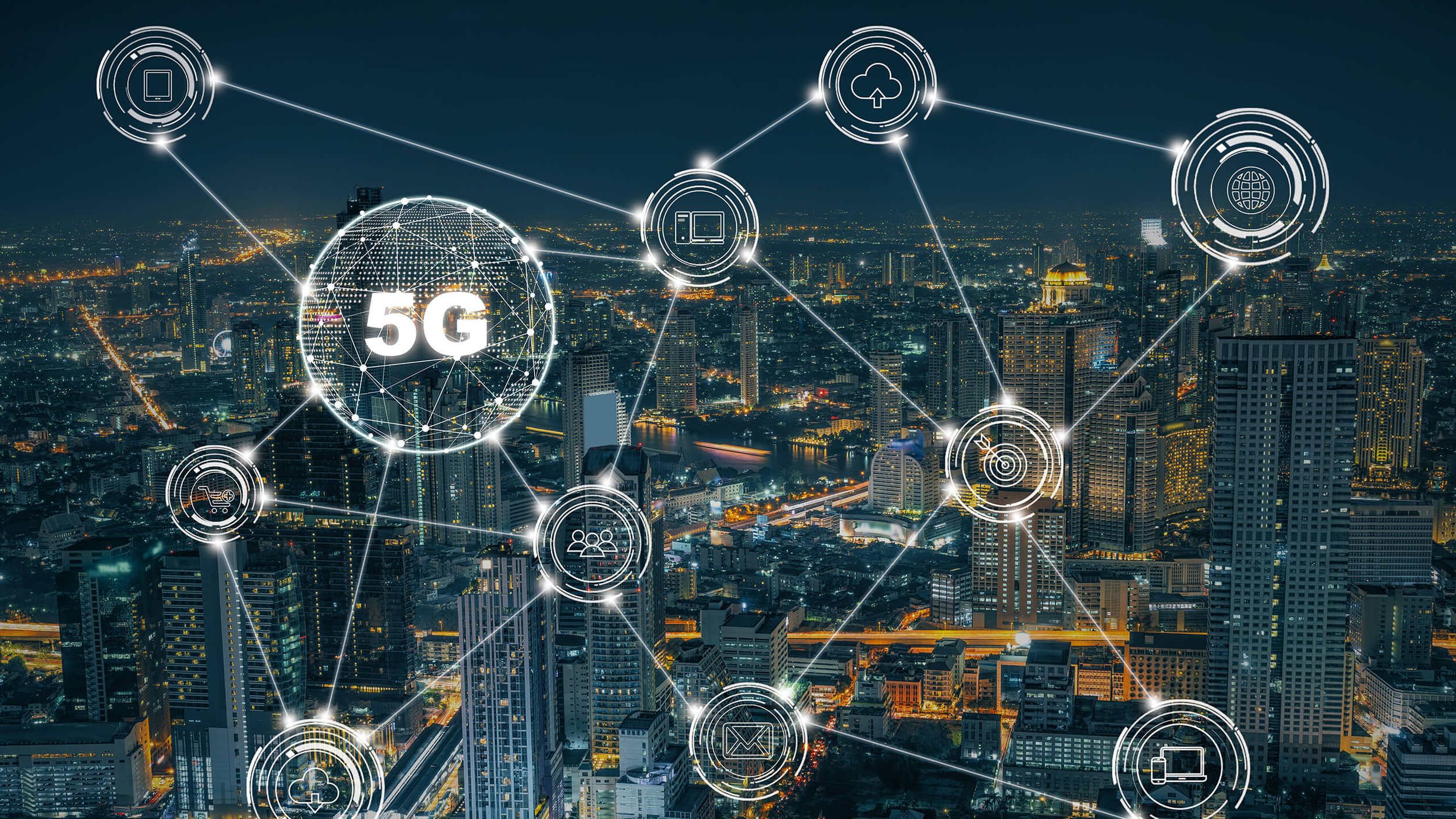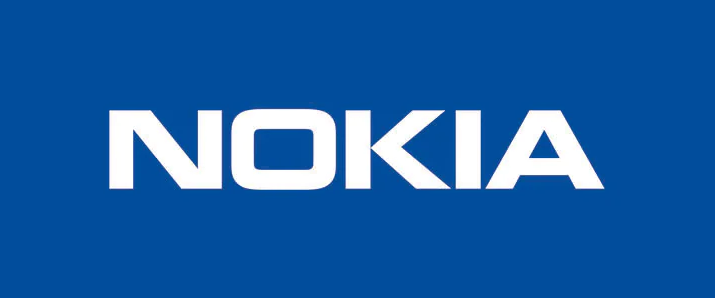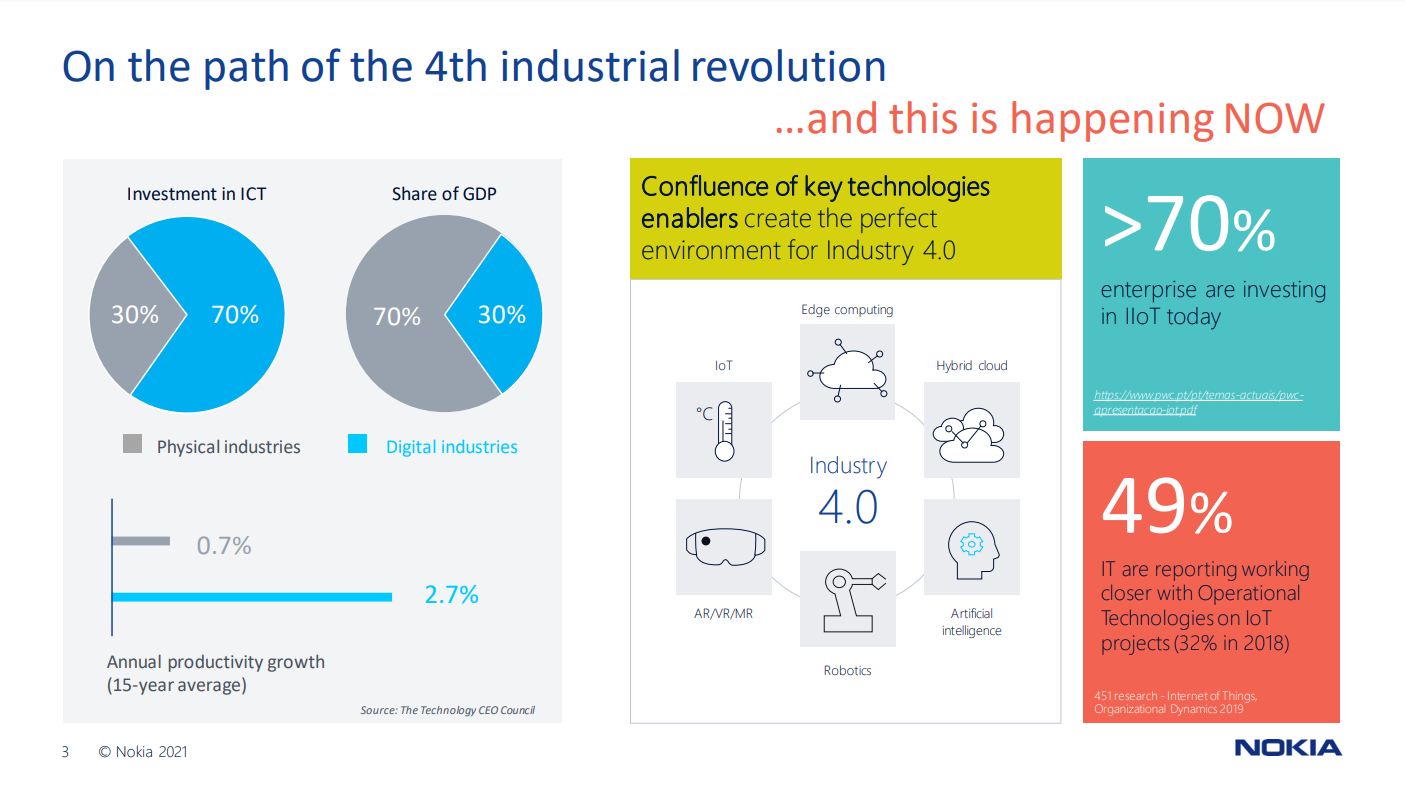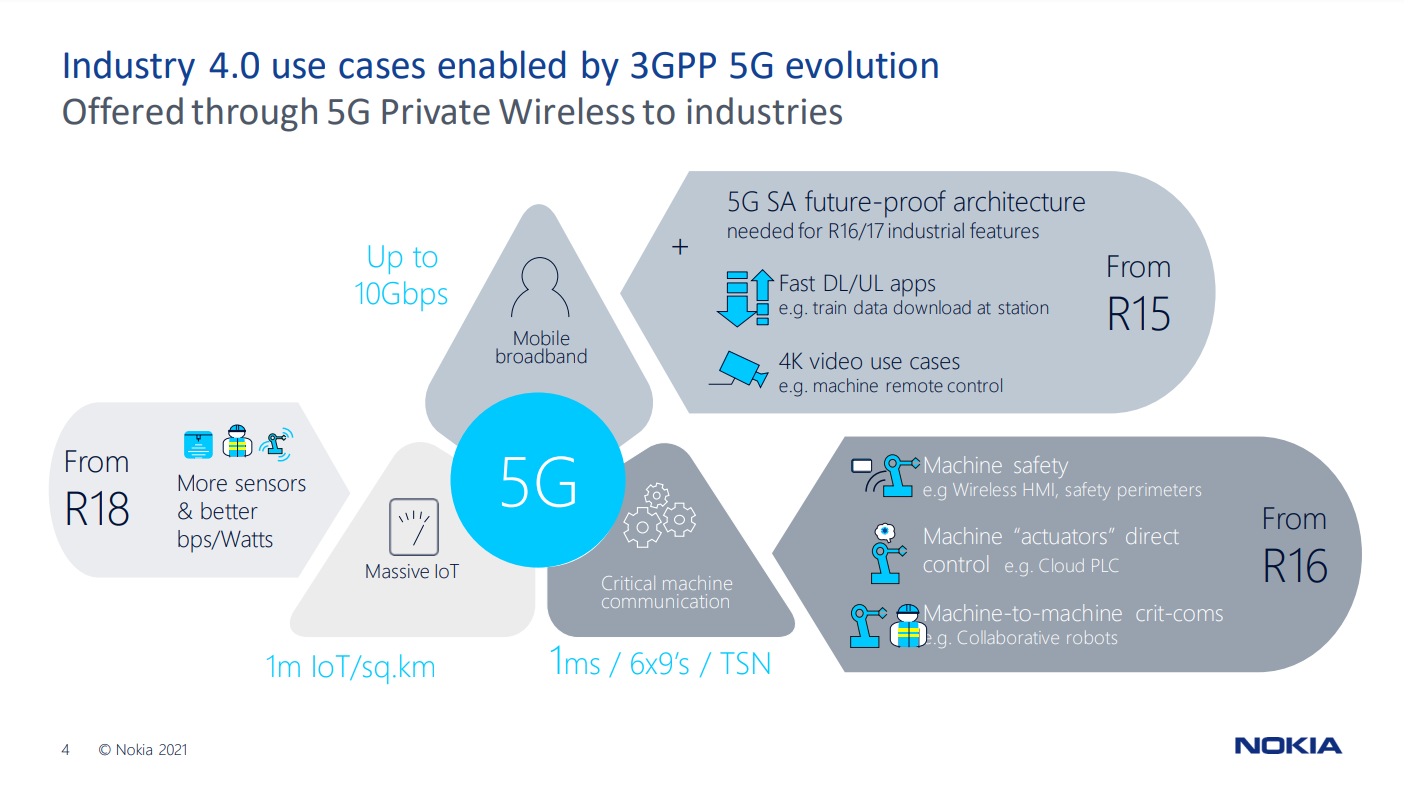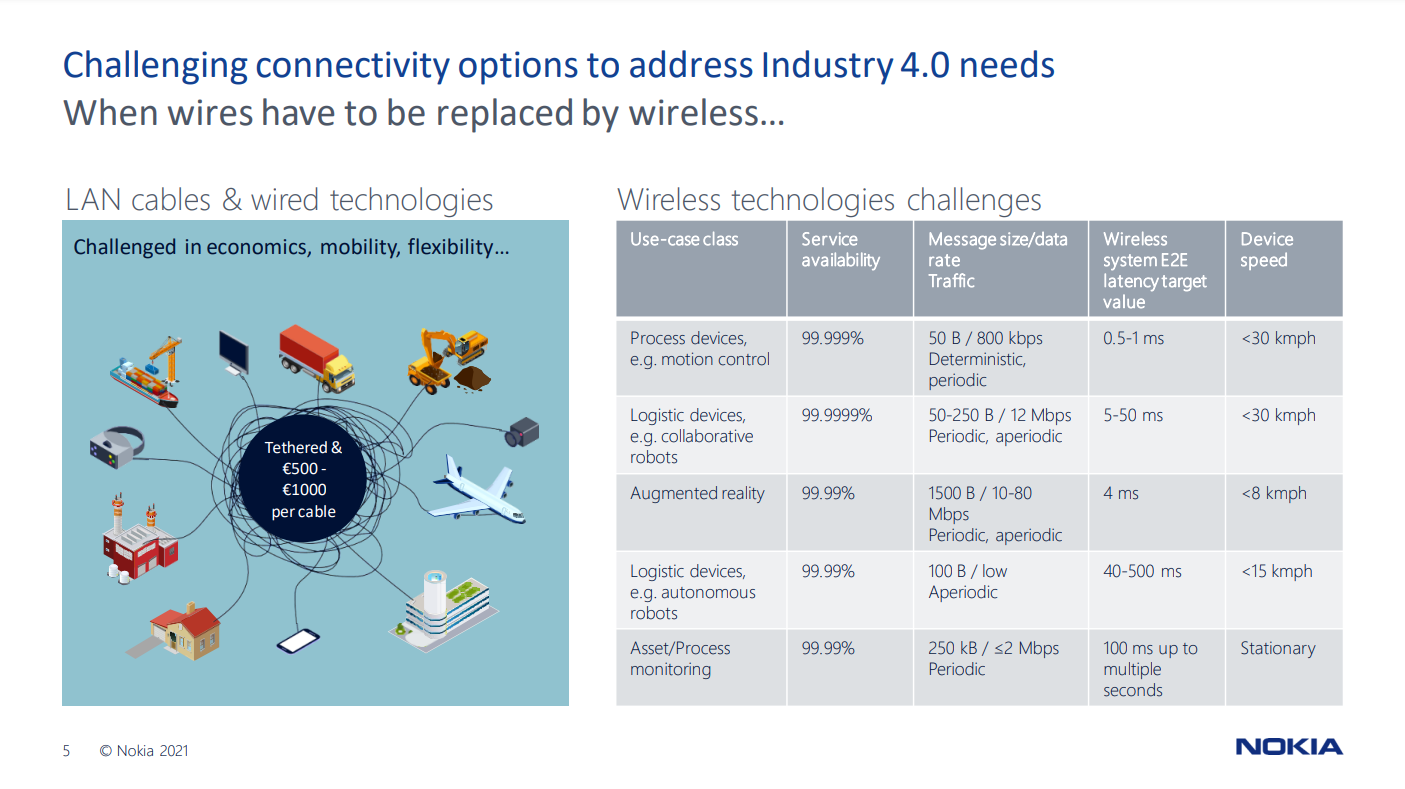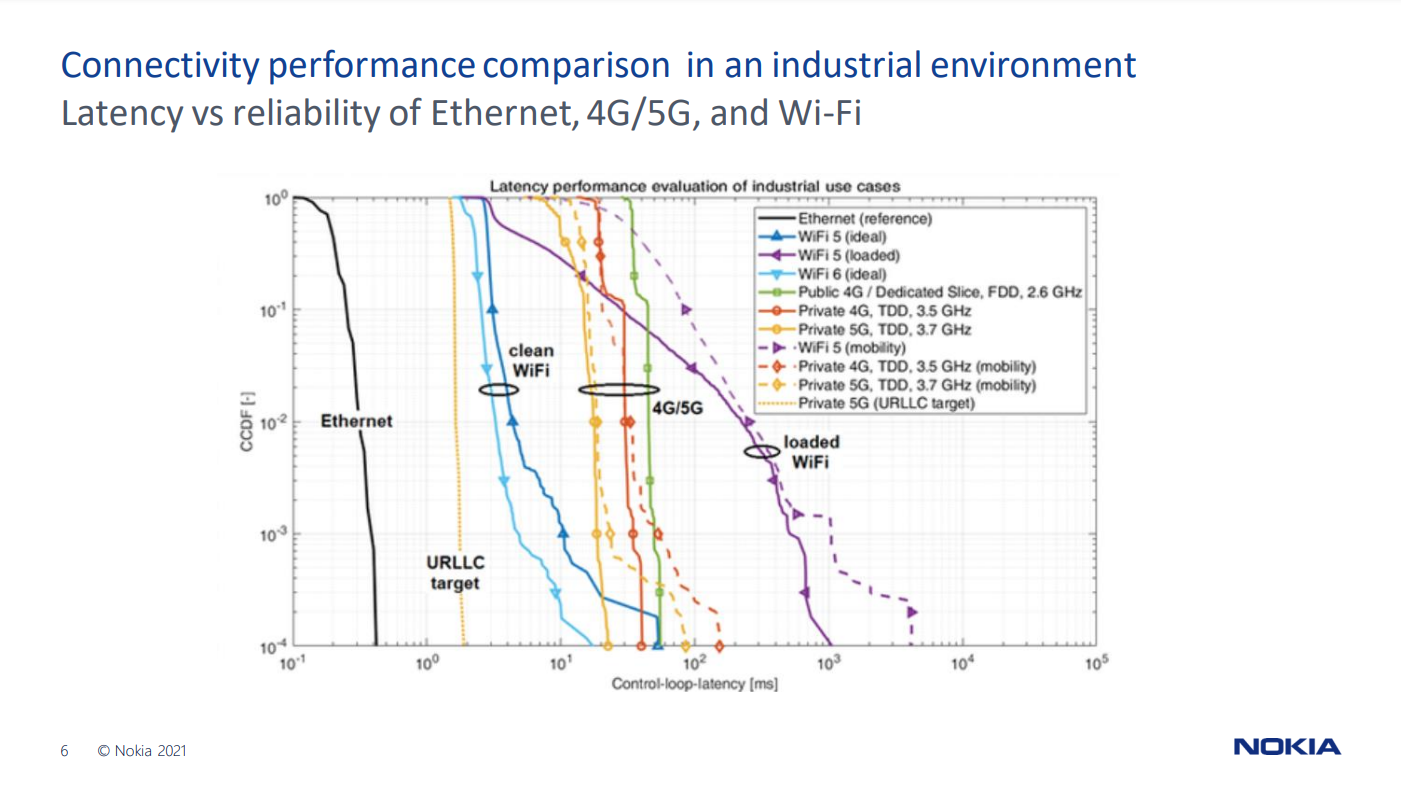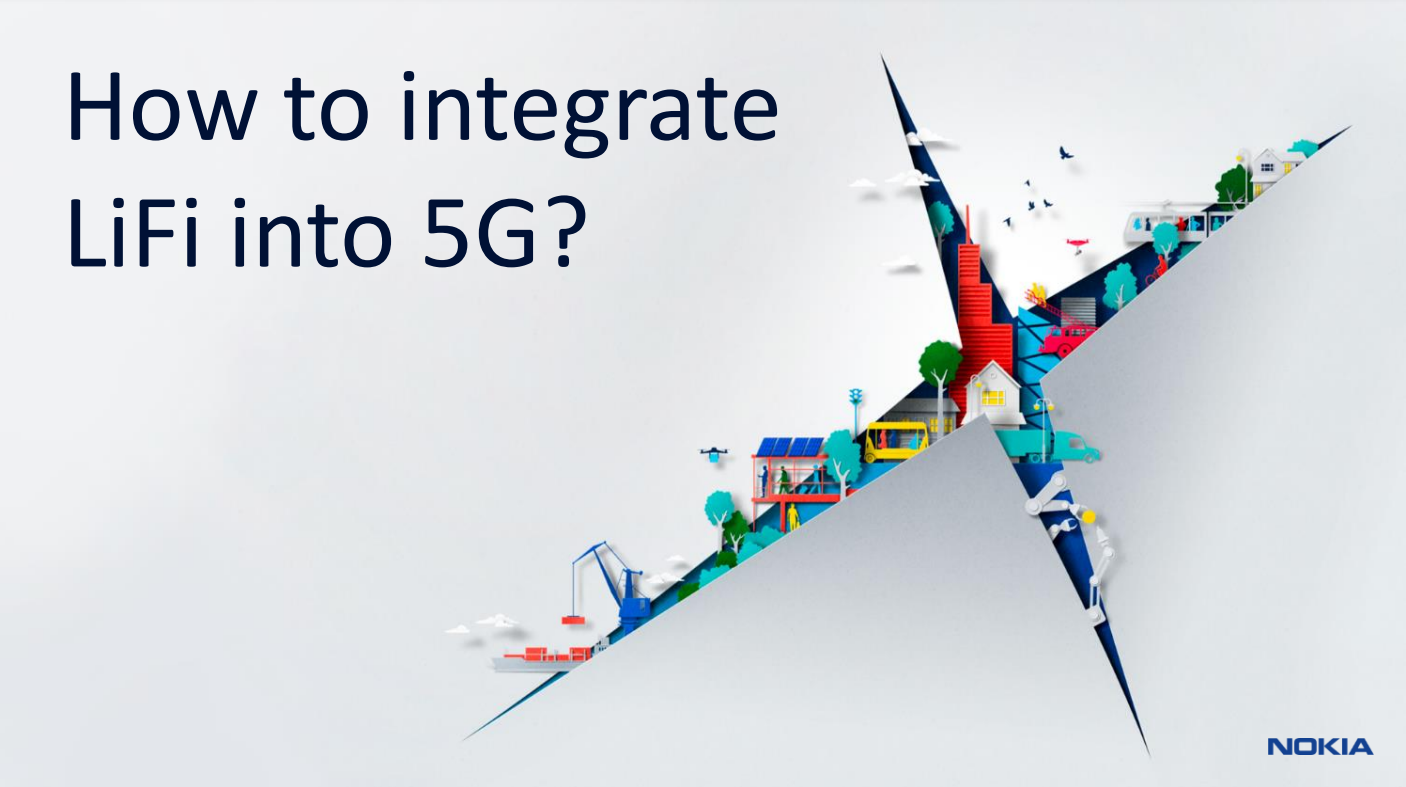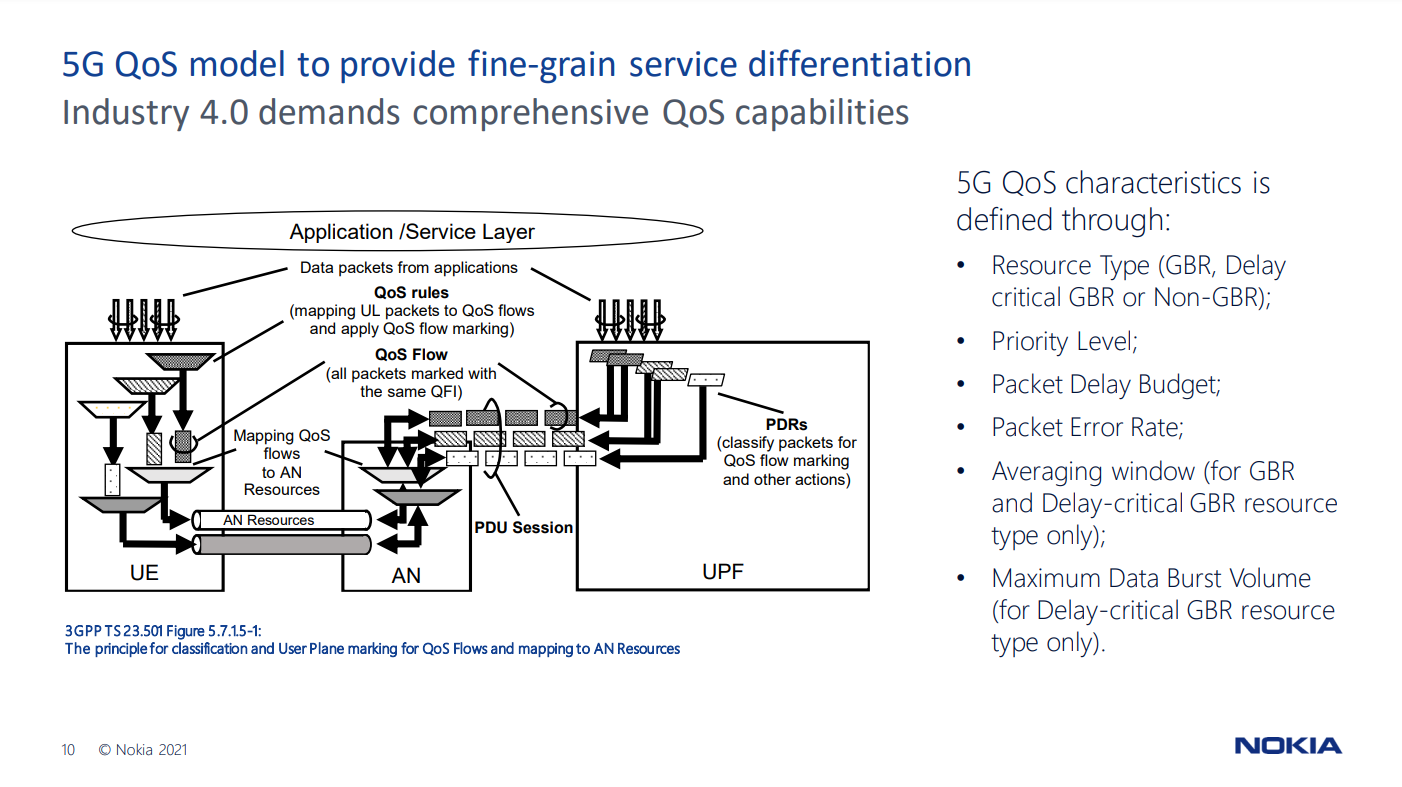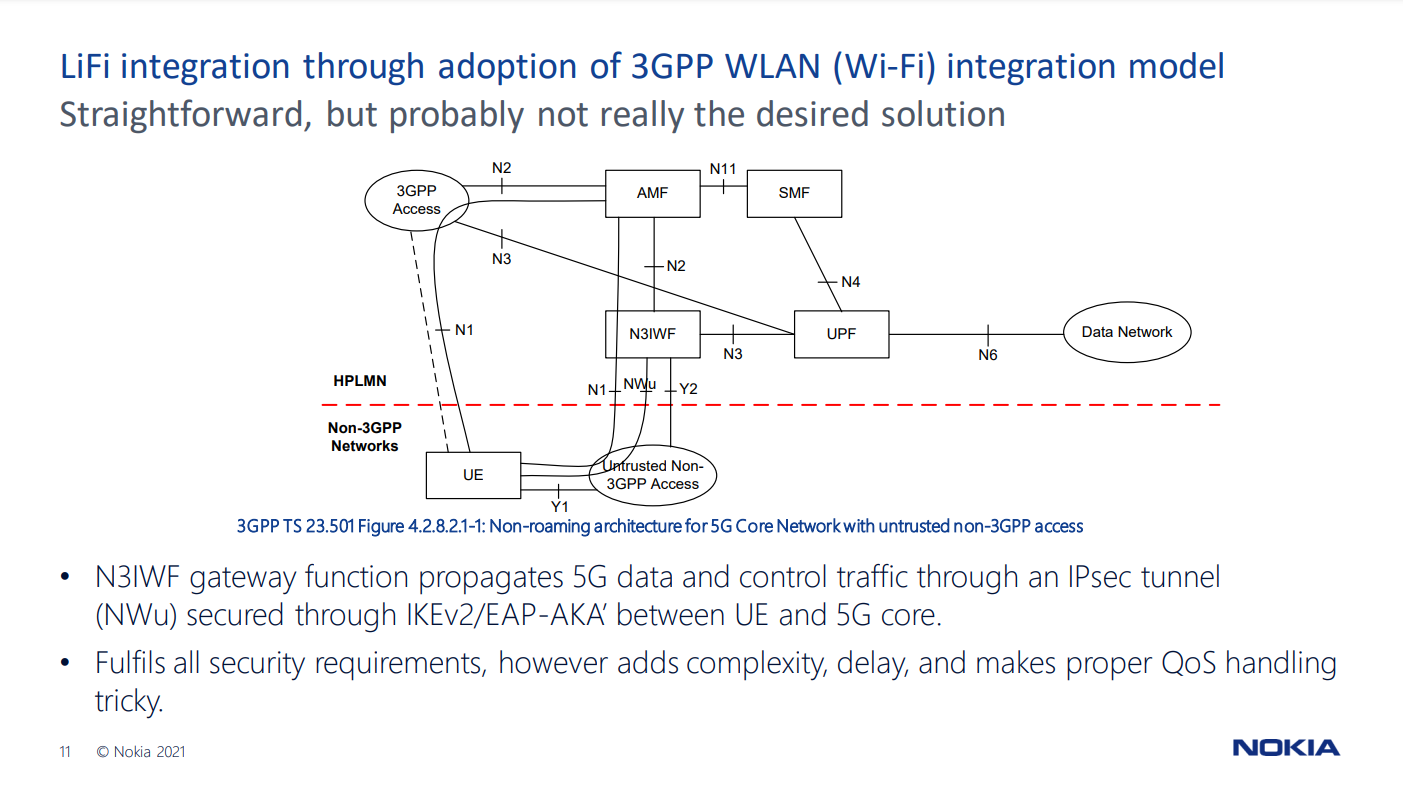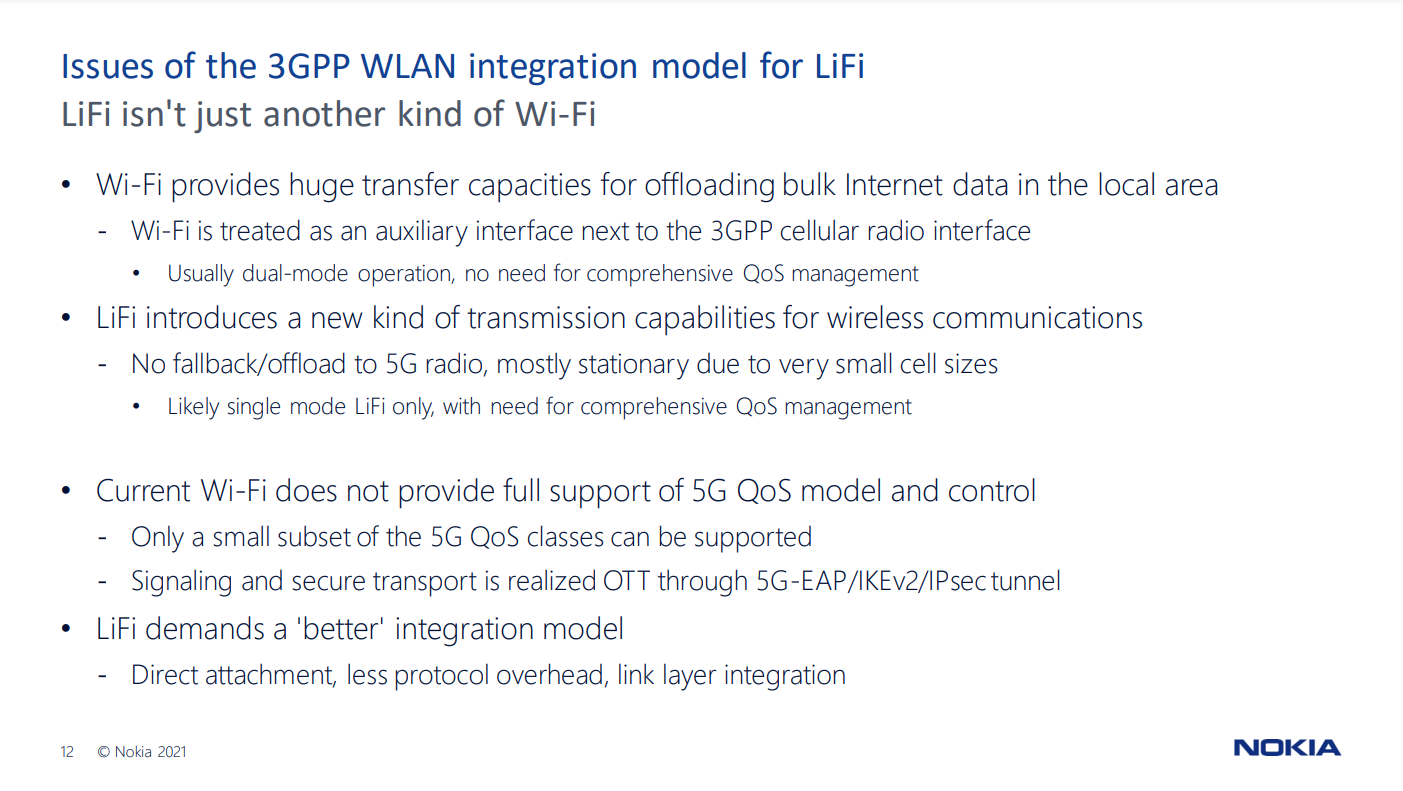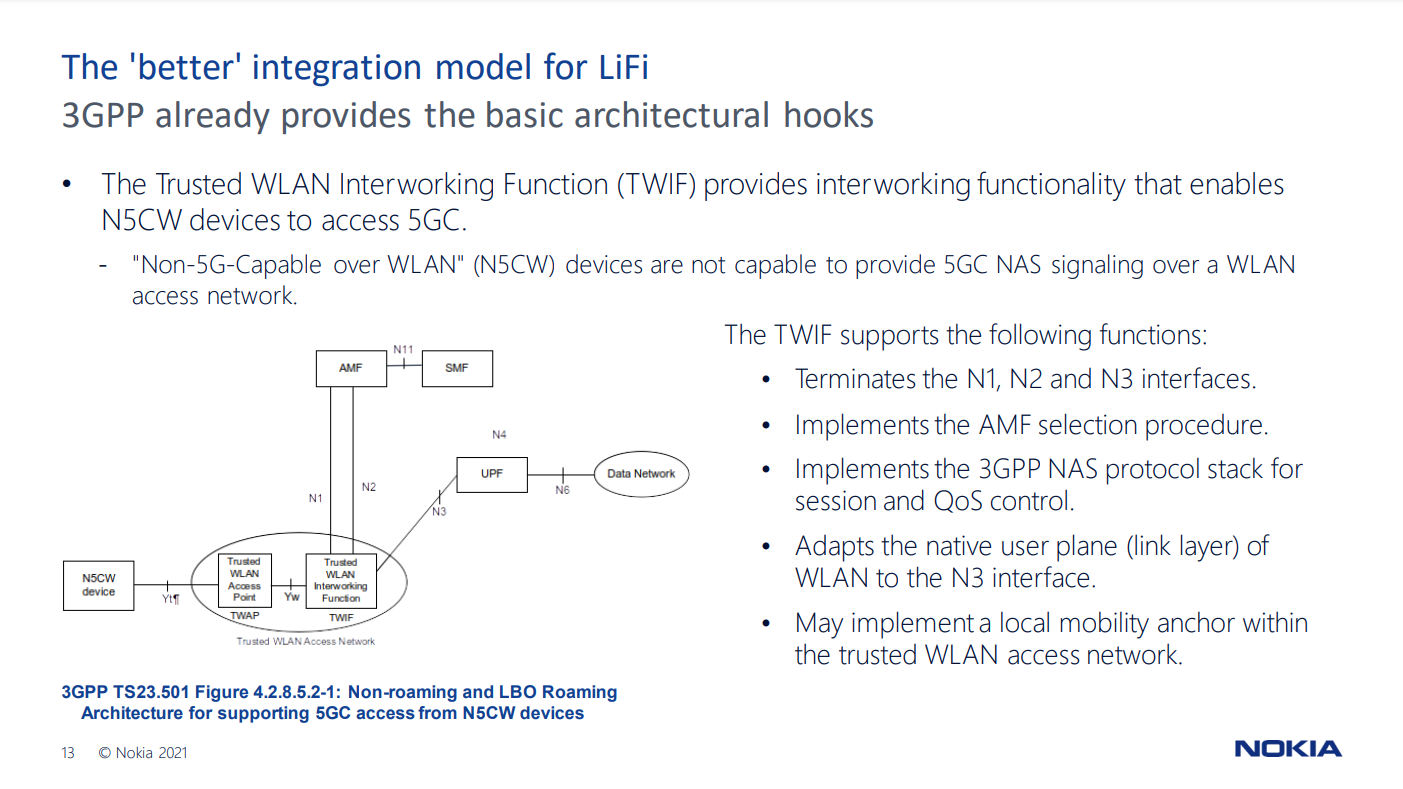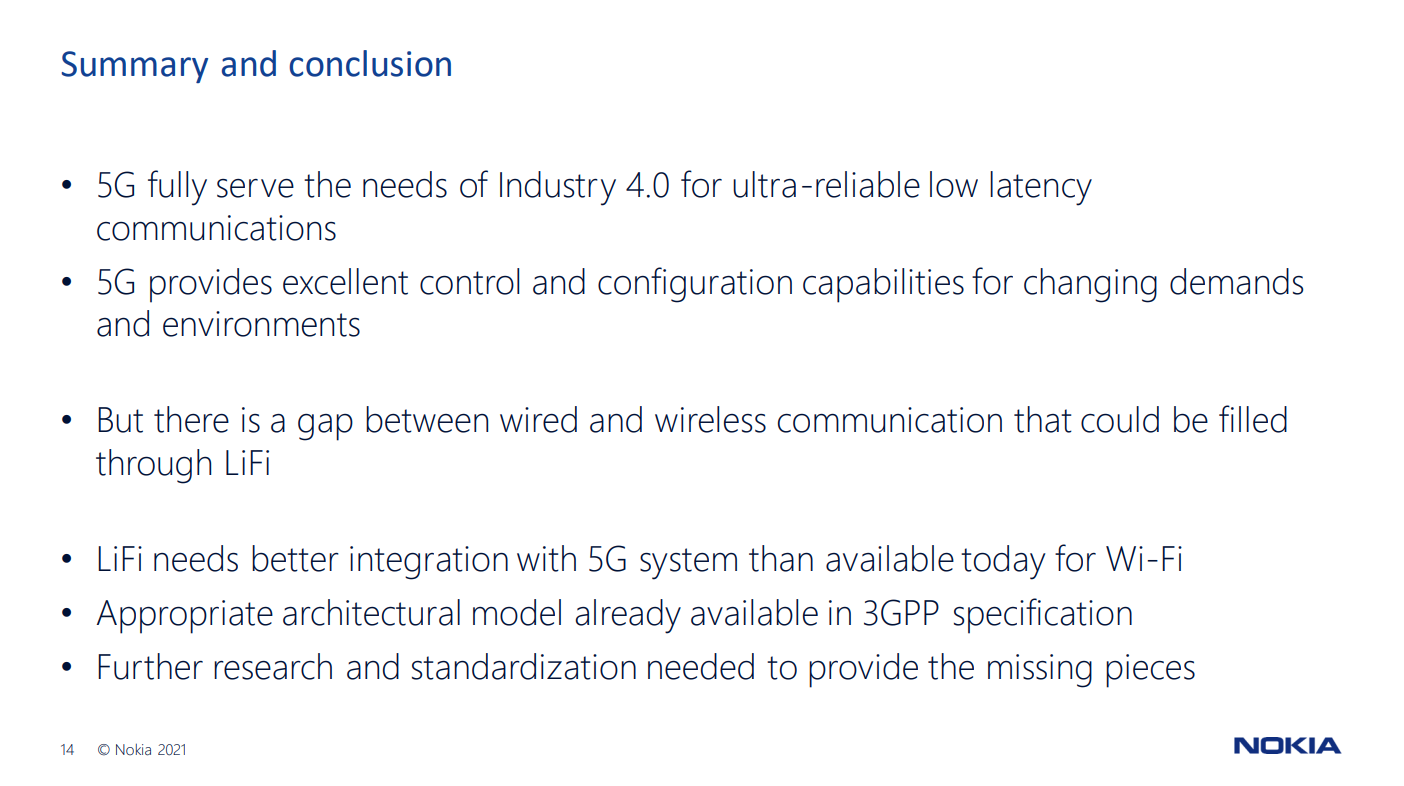Table of Contents
Li-Fi Conference 2021 - Recap Part 9 - Fully Leveraging LiFi Capabilities Through Enhanced Integration With 5G Core And Services
Li-Fi Conference 2021
In our last article from our ONLINE Li-Fi Conference 2021 recap series, we discussed the duo presentation on LiFi At The Heart Of Future Intelligent Communications Networks delivered by Sylvain Leroux, FoodTech & Light Communications Director, Orange and Micheline Perrufel, Researcher/Project manager Innovation, Orange. The conference was organised by the Jakajima, the global High Tech Conference organiser, and the Light Communications Alliance.
Jakajima, Matchmaker for Innovators in the high tech industry, organises many events, ranging from LiFi Technology industry trends, 3D Printing to the Internet of Things, from Unmanned Cargo Aircraft to Health Tech, from 4D Printing to Photonics and from Vertical Farming to Sustainable Materials.
The online Li-Fi Conference included live presentations from researchers, executives and industry specialists from pureLiFi, Nokia, Signify, Orange, Radiocommunications Agency Netherlands, Velmenni, OLEDCOMM, HomeGrid Forum and Weidmüller Deutschland.
In another article recap series, we will talk about the presentation on Fully Leveraging LiFi Capabilities Through Enhanced Integration With 5G Core And Services delivered by Maximilian Riegel from Nokia. Before this, we will talk about Nokia.
Nokia
Nokia Corporation (natively Nokia Oyj, referred to as Nokia; stylized as NOKIA) is a Finnish multinational telecommunications, information technology, and consumer electronics company, founded in 1865. Nokia's main headquarters are in Espoo, Finland, in the greater Helsinki metropolitan area, but the company's actual roots are in the Tampere region of Pirkanmaa. In 2020, Nokia employed approximately 92,000 people across over 100 countries, did business in more than 130 countries, and reported annual revenues of around €23 billion. Nokia is a public limited company listed on the Helsinki Stock Exchange and New York Stock Exchange. It is the world's 415th-largest company measured by 2016 revenues according to the Fortune Global 500, having peaked at 85th place in 2009. It is a component of the Euro Stoxx 50 stock market index.
The company has operated in various industries over the past 150 years. It was founded as a pulp mill and had long been associated with rubber and cables, but since the 1990s has focused on large-scale telecommunications infrastructure, technology development, and licensing. Nokia made significant contributions to the mobile telephony industry, assisting in the development of the GSM, 3G, and LTE standards. For a decade beginning in 1998, Nokia was the largest worldwide vendor of mobile phones and smartphones. In the later 2000s, however, Nokia suffered from a series of poor management decisions, and soon saw its share of the mobile phone market drop sharply.
After a partnership with Microsoft and Nokia's subsequent market struggles,Microsoft bought its mobile phone business, creating Microsoft Mobile as its successor in 2014. After the sale, Nokia began to focus more on its telecommunications infrastructure business and on Internet of things technologies, marked by the divestiture of its Here mapping division and the acquisition of Alcatel-Lucent, including its Bell Labs research organization. The company then also experimented with virtual reality and digital health, the latter through the purchase of Withings. The Nokia brand returned to the mobile and smartphone market in 2016 through a licensing arrangement with HMD Global. Nokia continues to be a major patent licensor for most large mobile phone vendors. As of 2018, Nokia is the world's third-largest network equipment manufacturer.
The company was viewed with national pride by Finns, as its mobile phone business made it by far the largest worldwide company and brand from Finland.
Fully Leveraging LiFi Capabilities Through Enhanced Integration With 5G Core And Services By Maximilian Riegel
Maximilian Riegel from Nokia, was the ninth presenter at the online Li-Fi Conference 2021. He discussed in his presentation the topic of Fully Leveraging LiFi Capabilities Through Enhanced Integration With 5G Core And Services.
Maximilian Riegel received his Dipl.-Ing. degree in Electrical Engineering from TU Munich, Germany and is currently responsible for IEEE & Wi-Fi standardization within Nokia. He participies in IEEE 802 and other Wi-Fi related standardization for more than 15 years and led the development of IEEE 802.1CF-2019 specification. He was NWG vice chair in the WiMAX Forum, led the Ethernet over cellular work in IETF 16ng WG, and chaired the OmniRAN SG/TG activities in IEEE 802. He regularly acts as lecturer for Wi-Fi and as speaker at technical conferences. Formerly, he held R&D management positions within Siemens Communications and Philips Communication Industry.
Below are some points discussed about Fully Leveraging LiFi Capabilities Through Enhanced Integration:
Maximilian Riegel started his presentation by saying the following:
“What we are currently in is in the middle of a fourth industrial revolution, driven by the move of the industry to digitisation and optimise control. So, deploying IT technology to get production more enhanced, and really investing a huge amount of money now in enhancing industrial production capabilities and methods.”
Industry 4.0 use cases enabled by 3GPP 5G evolution
“And we see that this opens a new market. And it's not only opening a new market, it's already driving the standardisation and the development and the whole idea of 5G and the evolution of 5G, which started initially from doing much better Broadband now is going into machine type communication, ultra-light low latency communication techniques, enhancements, which are very important for control in factories, machineries, all this IoT stuff, industrial IoT stuff, where nowadays, we are not talking about the gigabits, but more about the milliseconds. And that's what's critical."
Challenging connectivity options to address Industry 4.0 needs
”And where this industry 4.0 needs are really putting a burden on our communication technologies. And I have here on the right side, a table with different applications and a little bit of characterization of what's needed in terms of communication capabilities. If you're doing monitoring, if you're just collecting data, then yes, you are getting a huge amount of data. But what's not so critical is the delay. And it's also not so critical. When a bit is transferred incorrectly, you have always the possibility to retransmit. So that's where you can do a huge amount of pipe data without high precision transmission capabilities, it's getting a little bit more challenging when you're doing starting to control equipment like autonomous robots, where you may have to go down to some transmission capabilities challenging and where it stand finally, really starting to become challenging if you're doing modern things like augmented reality, where short delays are extremely important. People are really becoming seasick when there's too much delay. And we're we have also another way, where reliability is going up orders of magnitudes when doing robotic control, or when sitting with telecommunications or communications in control loops, extreme time-critical control loops when systems have to provide delay times millisecond or below a millisecond. That's where our technology our wireless technology currently has difficulties where the industry currently is doing. Wire, as you see it on the left side, but yeah, wire is excellent transmission capabilities, but has challenged in mobility flexibility, also in the economics, when setting up wire.”
Connectivity performance comparison in an industrial environment
“And what we did is a little bit of comparison, where are the different technologies, where are different standards located when you're comparing latency and reliability and I have a figure here showing Ethernet 4G/5G, ci and Wi-Fi. And what you see is Ethernet is extremely low delay, up to extremely high reliability. And when our doing our most used radio technology, meanwhile was 4G/5G. We are coming down in the range of 20 milliseconds to 10 milliseconds. That's something we can do. But what's really desired and you have seen the applications is we have to go even shorter delays at high reliability at much lower transmission delays. And the assumption is just from the physics, LIFI could fill us, could provide us solutions, which are really suited for this industrial IoT, industrial control loaded low latency. Something going in that direction, we would like to have a wire but without a wire from transmission capabilities. So that's where LIFI could fit in.”
How to integrate LiFi into 5G?
“Now, LIFI into 5G. LIFI into 5G provides a comprehensive environment for doing complex communications of various applications. And what we have to think about is now we have to get LIFI into this overall 5G architecture.”
5G Architecture: Reference Point Representation
“5G architecture is mainly dominated or created, focused around session control, quality of service control, which provides a huge complexity. The 5G architecture has also the capabilities to be completely implemented in software. So it's not done this hardware functional architecture, it's functional architecture, where functional units are interoperating not saying anything about implementation. And when thinking about the integration of LIFI, we have to think about how we are getting LIFI on this end through N2 and N3 interfaces. We're currently with the 5G run, that's where we have to think about.”
5G QoS model to provide fine-grain service differentiation
“Why we are doing it as 5G provides the QoS model, the QoS control the need for industrial control. So 5G has an extremely comprehensive, sophisticated QoS model with a fine grain control capability. And 5G has the technology to do multiple different QoS flows on a common infrastructure, things really need it for industry, industrial applications and the industry 4.0 in the broad scope, if you'd like to do everything required in this industrial 4.0 area, you need a universal system, which has a huge variety of doing it.”
LiFi integration through adoption of 3GPP WLAN (Wi-Fi) integration model
“So the first approach to adoption to do the inclusion of LIFI into 5G would be oh, there is a nice model for Wi-Fi. Yeah, let's use the Wi-Fi model, we are also having a standardisation approach where we are getting a Wi-Fi or 802.11 variant with light, straightforward. And that would be the shortest path together into integration. This Wi-Fi integration model, the primary Wi-Fi integration model currently is based on an N3 IWF gateway. Now technically speaking, that's gateway and VPN gateway setting up an IPsec tunnel between the 5G core system and wireless LAN user equipment tunnelling the data through and tunnelling also signalling through and this Wi-Fi model, that's currently Wi-Fi model. This VPN connectivity is highly flexible in the deployment of what's needed currently for Wi-Fi. It fulfils all the security requirements. But we're now going into we like to do pure essence, stream handling and something like that. And we like to have the lowest delay, then it's becoming really tricky because a VPN tunnel always adds additional delays.”
Issues of the 3GPP WLAN integration model for LiFi
“So this is what we should keep in mind when doing Wi-Fi, LIFI integration into N3 or switching up to 5G core. The first thing is to consider what's Wi-Fi and what is LIFI. And that's the difference, LIFI isn't just a Wi-Fi. Wi-Fi is used as a huge transfer capability, offloading internet traffic in the local area. So it's an auxiliary interface to a primary switch up Key radio interface where you can just take off leverage cheaper channel when being in the local area. The terminals are usually dual-mode, they have all the 5g signalling, they have different signalling paths and they have no need for doing really a comprehensive QoS management. Now, when you have seen what we are thinking about LIFI, we see a new kind of transmission capability for wireless communication. No, a 5G radio is not just an alternative solution. LIFI is a new kind of quality. So, it's not necessary that there is a 5G radio interface in all LIFI interfaces. And we also expect that the LIFI interface devices are not such mobile, because LIFI cells are very small, so mostly stationary. So we have to think about a single-mode LIFI terminal. But we need a very comprehensive QoS management. So we have really to have access to the lower layer data not being encrypted on our IPsec tunnel where all service differentiation is really becoming challenging. And what we see is that the Wi-Fi integration model does not provide all this 5G QoS model and control. Only a small subset of 5G QoS can be supported in Wi-Fi, and we have the issue of the IPsec tunnel. So we need a kind of better integration model direct attachment, less overhead, less protocol overhead. And in particular link-layer integrations that we have access to the data streams.”
The 'better' integration model for LiFi
“And such a model already exists. But it's not fully out or deployed for LIFI. But it's probably a hint on how to proceed. There is a definition of a trusted wireless LAN interworking function, which is terminating N2 to N3 interfaces into a non three GPP technology, not demanding the IPsec tunnel doing and allowing for all the functional integration, having link-layer access to the user plane, maybe support local mobility, which is important in the LIFI area with the small coverage zones. And that's the proposal here for going forward when thinking about LIFI, thinking about a more core s focused integration model than we currently have for LIFI and working on further enhancements to get this model adopted for LIFI but also LIFI addressing the need of industry 4.0 that means providing high reliability, low latency communication, that may also work a little already with the standard coming out of 802.11bb by avoiding congestion and allowing a higher control.”
Summary and conclusion
“And then I'm coming to the end of my presentation but I've shown 5G is a system that really serves the needs of industry 4.0 for all this critical communication. In particular, 5G provides the control and configuration capabilities that are needed in industrial deployments. Frequently, configuration has to be adopted. What we also discovered or what we found is that there is a technology gap between wired and wireless. And we are looking forward to a domain where LIFI could excel. But finally, to deploy LIFI in this industrial environment, we see the need for better integration. And we see the need for leveraging or basing it on a different approach than what we have currently on Wi-Fi. And yeah what's asked for is further research standardisation to get this LIFI deployment really working. Currently, we have just the hints of the framework, but there are so many technologies still missing to get it working.”
You can also watch the full video presentation on the following YouTube link from Jakajima YouTube channel.
Li-Fi Conference 2022
The next Li-Fi Conference is coming up on the 28th of June 2022 between 10 am and 4.30 pm CET.
It is interesting to realise that lights that illuminate offices, homes, cars, factories, our streets and more locations also can connect us to data and hence power the growing demand for connectivity and speed.
At this conference professionals from all over the globe will gather together in order to share applications, ideas, new developments and ways to integrate Li-Fi in services, both for consumers and professionals.
This conference will be held Live and Online. The venue will be the High Tech Campus 1, The Strip 5656 AE Eindhoven The Netherlands.
Online tickets can be bought at the following link:
https://tikcit.com/register/61e002336d7fc4b6745cab83/
What is LiFi?
LiFi, also known as "Light Fidelity" is a wireless optical networking technology, which uses light-emitting diodes (LEDs) to transmit data. In 2011, professor Harald Haas made a LiFi demonstration at the TED (Technology, Entertainment, Design) Global Talk on Visible Light Communication (VLC).
VLC uses light as a medium to deliver high-speed communication like Wi-Fi and complies with the IEEE standard IEEE 802.15.7. The IEEE 802.15.7 is a high-speed, bidirectional, and fully networked wireless communication technology-based standard similar to Wi-Fi's IEEE 802.11.
How does LiFi work?
LiFi is a high speed, bidirectional, and fully networked wireless communication of data using light. LiFi constitutes of several light bulbs that form a wireless network.
When an electrical current goes through to a LED light bulb, a stream of light (photons) emits from the lamp. LED bulbs are semiconductor devices, which means that the brightness of the light flowing through them can change at extremely high speeds. The signal is sent by modulating the light at different rates. The signal can then be received by a detector that interprets the changes in light intensity (the signal) as data. Also when the LED is ON, you transmit a digital 1, and when it is OFF, you transmit a 0.
LiFi Benefits
The primary benefits of LiFi are as follows:
• Security: Provides entirely secure access. Where there is no light there is no data.
• Safety: Does not produce electromagnetic radiation and does not interfere with existing electronic systems.
• Localisation: Allows localisation due to the small coverage area of LiFi access point - localisation can be used for very precise asset tracking.
• Data density: Provides ubiquitous high-speed wireless access that offers substantially greater data density (data rate per unit area) than RF through high bandwidth reuse.
Credit to Oledcomm
LiFi Applications
LiFi can be used for so many applications and the list is increasing every year. You can read our updated list of Li-Fi applications at the following link:
Credit to pureLiFi
In conclusion, if you are also interested to hear more information about the OWNII Coin or enquire about LiFi devices such as the LiFiMax and Trulifi, you can contact us through our chatbot or by sending an email through our contact us form. If you enjoyed this post and would like to hear more updates about LiFi technology, subscribe to our newsletter. Don’t forget to subscribe to our social media accounts. You can also join our Telegram group about LiFi technology on this link:
https://t.me/joinchat/FMzOmsEKyJFrU6Af


